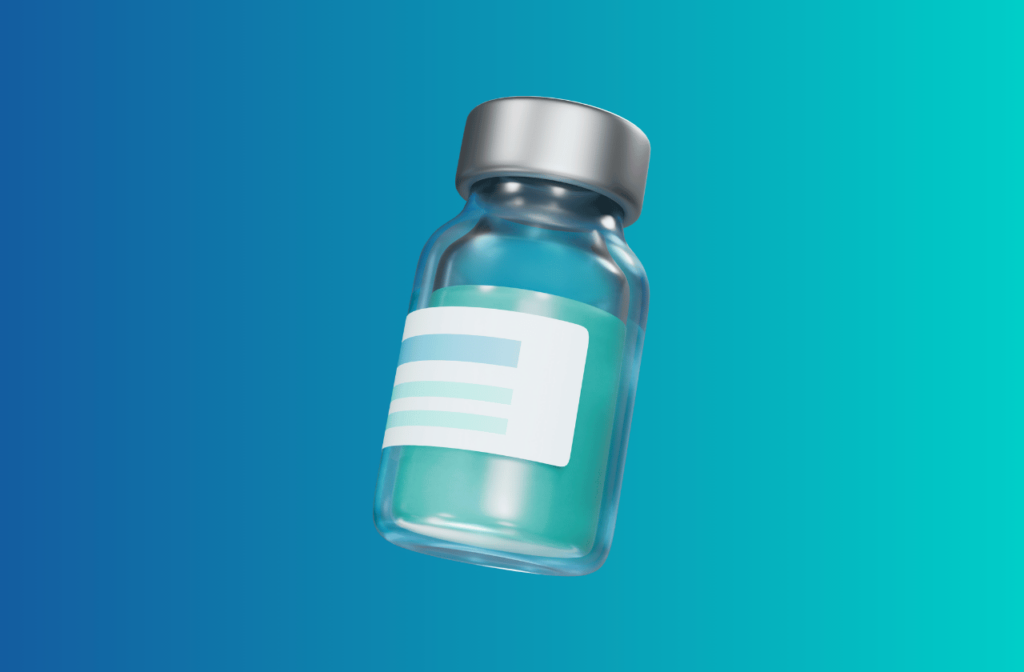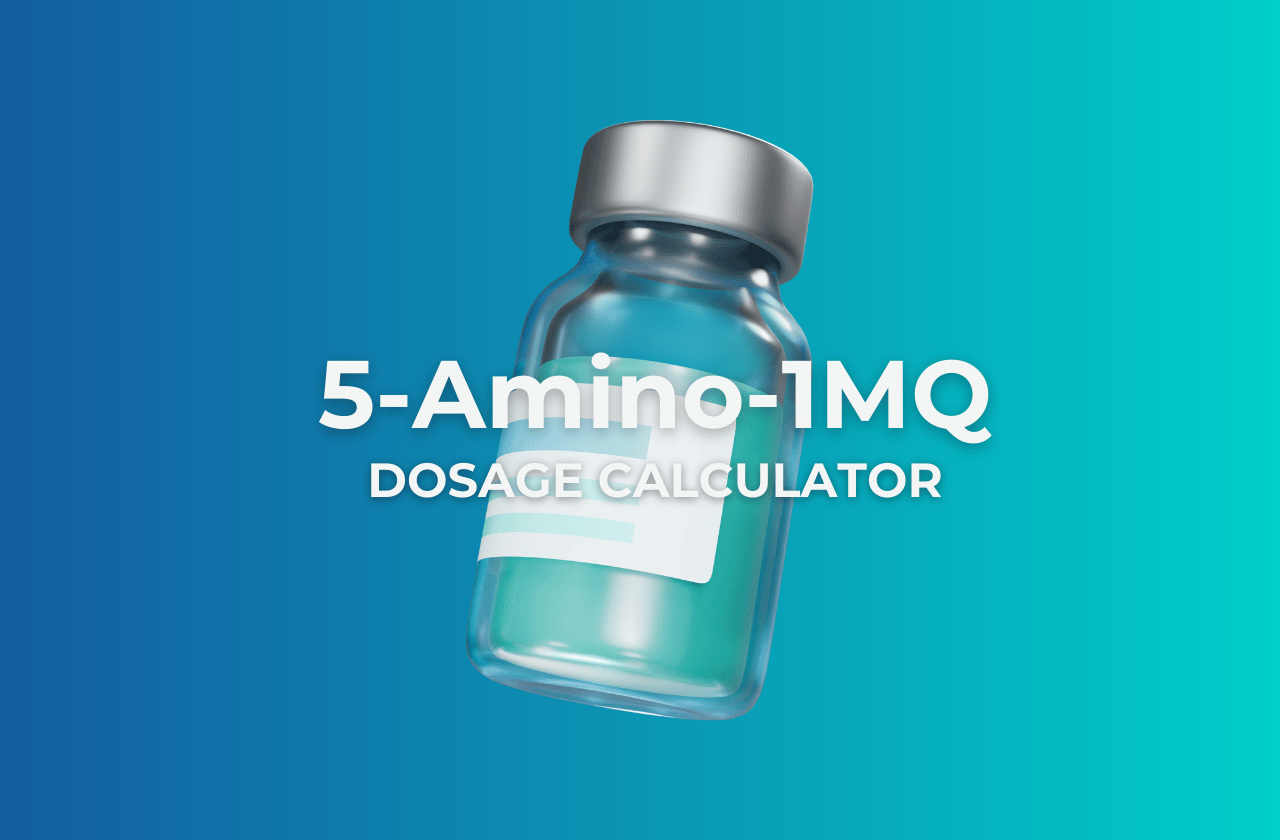[Disclaimer: This article is for informational purposes only and does not constitute medical advice. Always consult with a qualified healthcare provider before starting any peptide therapy.]
5-Amino-1MQ (5-amino-1-methylquinolinium) has gained significant attention in metabolic research and clinical applications.
This guide provides detailed information on proper dosing protocols, administration methods, and calculations to optimize therapeutic outcomes while minimizing potential risks.
Understanding 5-Amino-1MQ Peptide Therapy
5-Amino-1MQ functions as a selective inhibitor of nicotinamide N-methyltransferase (NNMT), an enzyme highly active in fat tissue and linked to obesity and type 2 diabetes. NNMT inhibition increases availability of NAD+ and influences metabolic processes, allowing the body to burn more calories while suppressing additional glycogen and fat deposits.
This small, membrane-permeable molecule with chemical formula C10H11N2+ works by improving glucose clearance from the blood and enabling cells to more rapidly use available energy.
The compound exists in multiple forms:
- Free base: Molecular weight 159.21 g/mol
- Iodide salt: Molecular weight 286.11 g/mol (C10H11N2·I)
Research has shown promising results for 5-Amino-1MQ in:
- Weight management through enhanced fat metabolism[1]
- Improved insulin sensitivity and glucose tolerance[2]
- Potential metabolic disorder applications[2]
- Anti-aging and cellular energy[3]
- Restoring NAD+ levels[3]
Standard Dosage Recommendations

Oral Administration
The typical oral dosage range for 5-Amino-1MQ in clinical settings is:
| Formulation | Dosage Range | Frequency | Total Daily Dose |
|---|---|---|---|
| Capsules | 50 mg | 1-3 times daily | 50-150 mg |
| Capsules | 50 mg | Once daily | 50 mg |
Injectable Administration
For injectable formulations (typically used in supervised clinical settings):
| Formulation | Concentration | Single Dose | Protocol Duration | Administration Route |
|---|---|---|---|---|
| Solution | 300 mg/ml | 150 mcg (0.5 ml) | Daily for 20 days | Subcutaneous |
Administration Timing
For optimal results, administration timing considerations include:
- Oral capsules: Take with a full glass of water
- Injectable format: Administer 30 minutes after oral NAD+ precursor supplementation
- Evening dosing caution: Some practitioners report sleep disturbances when taken later in the day
Weight-Based Dosing Calculator
To calculate a personalized dose based on body weight, you can use the following formula derived from clinical research:
- Determine the target dose in mg/kg (typically 1-2 mg/kg based on human equivalent dose calculations)
- Multiply by individual body weight in kg
- Resulting value represents the total daily dose in mg
Peptide Dosage Calculator (Injectable)
Peptide Reconstitution Calculator
What is the total volume of your syringe?
Select Peptide Vial Quantity
How much bacteriostatic water are you adding?
Concentration: 5.000 mg/mL (5000 mcg/mL)
How much of the Peptide do you want in each dose?
Draw up: 0.010 mL to get 50 mcg
Insulin syringe: 1.0 units (if using a U-100 syringe)
To have a dose of 50 mcg pull the syringe to 5
Formulation Considerations
Oral Capsules
Oral capsules represent the most common formulation for clinical use. Key considerations:
- Typical concentration: 50 mg per capsule
- Administration: Swallow whole with water; do not chew or crush
- Storage: Keep in cool, dry place (59-77°F) in original container
Injectable Solutions
Injectable formulations may be used in specialized clinical settings:
- Typical concentration: 300 mg/ml
- Administration volume: 0.5 ml for 150 mcg dose
- Route: Subcutaneous injection
Third-Party Tested, 99% Purity
Order lab-verified peptides from our top recommended vendor.

Safety and Precautions
Side Effect Profile
Based on available research, 5-Amino-1MQ appears to have a favorable safety profile:
- Rodent studies have found no significant adverse effects
- No established human toxicity profile is currently available
- The most commonly reported effect is potential sleep disturbance
- An acclimation period may be necessary, with some subjects reporting decreased exercise tolerance with cardiovascular exercise during initial treatment
Special Populations and Contraindications
Due to limited safety data, the following populations should exercise caution or avoid use until more research is available:
- Pregnant or breastfeeding individuals
- Those with chronic health conditions
- Individuals taking medications that might interact with 5-Amino-1MQ
Takeaway
5-Amino-1MQ represents a promising approach for addressing metabolic disorders through NNMT inhibition. The standard dosage range of 50-150 mg daily for oral administration aligns with calculated human equivalent doses from animal research.
While preliminary safety data appears promising, more comprehensive human studies are needed to establish definitive dosing guidelines and safety parameters.
When considering 5-Amino-1MQ as a therapeutic intervention, individualized dosing based on body weight, formulation type, and specific health goals should be determined in consultation with a qualified healthcare provider familiar with this compound’s mechanisms and applications.
References
- Dimet-Wiley, A., Wu, Q., Wiley, J., Eswar, A., Neelakantan, H., Savidge, T., & Watowich, S. (2022). Reduced calorie diet combined with NNMT inhibition establishes a distinct microbiome in DIO mice. Scientific Reports, 12. https://doi.org/10.1038/s41598-021-03670-5.
- Liu, J. R., Deng, Z. H., Zhu, X. J., Zeng, Y. R., Guan, X. X., & Li, J. H. (2021). Roles of Nicotinamide N-Methyltransferase in Obesity and Type 2 Diabetes. BioMed research international, 2021, 9924314. https://doi.org/10.1155/2021/9924314.
- Li, J., Sun, W., Zhu, X., Mei, Y., Li, W., & Li, J. (2024). Nicotinamide N-Methyltransferase (NNMT): A New Hope for Treating Aging and Age-Related Conditions. Metabolites, 14. https://doi.org/10.3390/metabo14060343.








